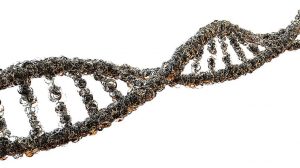Definition
noun
The single crease or line extending across the palm, and formed by the fusion of the proximal and the distal transverse palmar creases
Supplement
In humans, the palm has creases that developed during the embryonic stage. Palmar creases form often by the 12th week of gestation.1 Normally, there are three major palmar creases. They are (1) radial longitudinal crease, (2) proximal transverse crease, and (3) distal transverse crease. In palmistry, they are commonly referred to as the life line, the head line, and the heart line, respectively.2
The single transverse palmar crease refers to the palmar crease that extends transversely on the palm. It is formerly referred to as simian crease because of its resemblance to that of simians or primates, e.g. apes. In humans, the single transverse palmar crease forms by the fusion of proximal and distal transverse palmar creases. It is not a common feature in humans. It occurs in only 10% of the general population. It is also associated with individuals with genetic disorders, such as Down syndrome, trisomy 13, Rubella syndrome, Turner syndrome, Klinefelter syndrome, cri du chat syndrome, etc.1
Synonym(s):
- simian line
- simian crease
- simian fold
- transverse palmar crease
See also:
Reference(s):
1 Kaneshiro, N. K. (2013). Simian crease. Medline. Retrieved from https://www.nlm.nih.gov/medlineplus/ency/article/003290.htm.
2 Sharma, D. K. & Sharma, V. (2011). Prevalences of Simian, Sydney and Suwon creases and their association with each other, body sides, handedness, gender and anomalies/diseases/syndromes in a population of Central India. Int. J. Morphol., 29(3):1069-1075.







